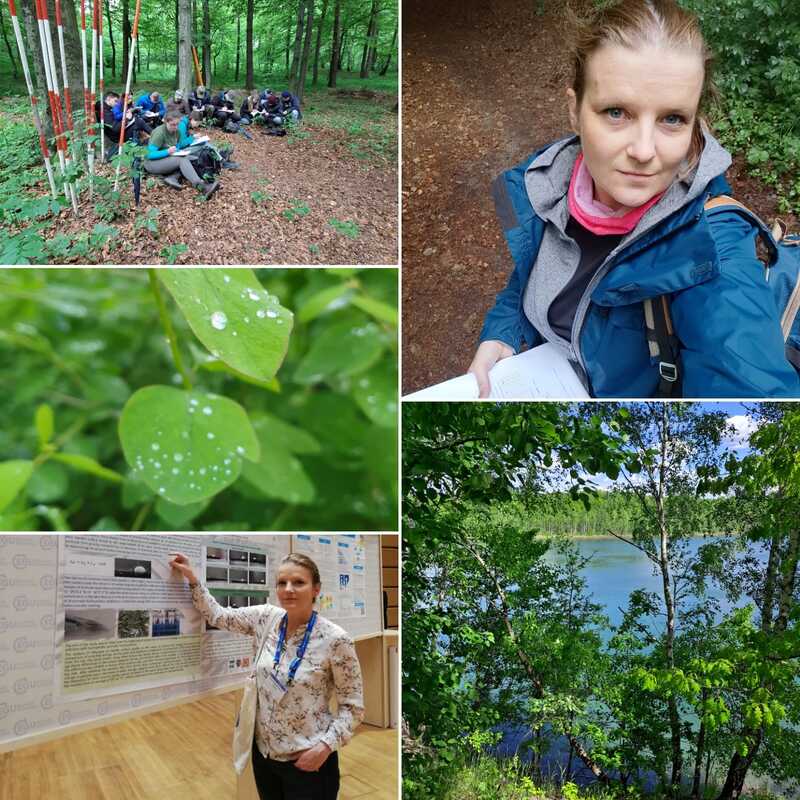Ecohydrology combines lessons drawn from ecology and hydrology. It is a means to discover and understand the ordinarily concealed interactions between organisms (biocenosis), anthropogenic factors (e.g. air pollution) and the hydrological cycle. My work has so far convinced me that no factor influencing the water capacity of ecosystem elements (tree crowns, bark, dead wood, soil) can be considered in isolation from others. I have studied how pollution and fungal infections increase water storage capacity of leaves and how the pollution reduces the retention properties of lichens. Ecohydrology strives to leverage these natural mechanics to engineer and increase the retention capacity of forests, especially in the context of climate change.
What are your undergraduate and graduate degrees in?
M.Sc. degree with thesis entitled "Research on water absorbability of soil skeleton and the degree of its weathering in mountain soils."
Ph.D of Forestry Degree in Forest Hydrology with dissertation entitled „Interception of selected trees under laboratory research conditions”.
I also completed the stage called habilitation on the basis of a series of publications under the common title: "Factors influencing the water capacity of forest tree crowns and the wettability of plant material" (field of forest sciences> forestry> forest hydrology).
This was all accomplished in the Department of Forestry Faculty at Agricultural University in Krakow.
How did you arrive at working in/thinking about ecohydrology?
The current direction of my research is focused on the hydrology associated with determining the interception water capacity of tree canopy and with the physical properties of plant material affecting the wettability of leaves and needles. I also explore other components of the forest ecosystem, such as dead wood, lichen and moss. Within this area of research, I conduct laboratory and field measurements aimed to determine an effect of a single tree and the changes in it that affect the amount of water that reaches the bottom of the forest.
Earlier on in my research I focused on issues related to the calculation of water reserves in mountain soils. The issue of the laboratory approach to the study of water absorption of the ground skeleton, including the degree of its weathering was the subject of my master's thesis. The culmination of my work in this area were two patents of the Republic of Poland, which I co-authored. The patents concern both the device for acquiring the research material needed to determine the measures of soil skeleton weathering degree and the method of determining the measures of soil skeleton weathering in a dry and water environment.
I am currently revisiting these soil related topics in my exploration of retention in newly developing ecosystems in post-mining sites and in cities. This seems to be a broad direction in which I am going with my research.
What do you see as an important emerging area of ecohydrology?
Seemingly small hydrological changes in local forest complexes and changes in the amount and intensity of rains, which make up the overall picture of water that is increasingly difficult for plants to access.
Do you have a favorite ecohydrology paper? Describe/explain.
I participated in the book "Precipitation partitioning by vegetation" edited by John van Stan, Ethan Gutmann and Jan Friesen (2020) and I must say that this is a truly comprehensive approach to partitioning issues. It was a great pleasure to work in such a team. I really like the fact that apart from scientific articles, there are richly illustrated versions popularizing important hydrological issues, e.g.https://www.researchgate.net/publication/315744259_Graphic_novella_Plant_Invasion_Alters_Canopy_Ecohydrology
I would also like to mention:
Doerr, G.J.; Kempthorne, D.M.; Mayo, L.C.; Forster, W.A.; Zabkiewicz, J.A.; McCue, S.W.; Belward, J.A.; Turner, I.W.; Hanan, J. Towards a model of spraycanopy interactions: Interception, shatter, bounce and retention of droplets on horizontal leaves. Ecol. Model. 2014, 290, 94–101.
Keim, R.F.; Skaugset, A.E.; Weiler, M. Storage of water on vegetation under simulated rainfall of varyingintensity.Adv. Water Resour.2006,29, 974–986.
This is where my adventure with ecohydrology began.
What do you do for fun (apart from ecohydrology)?
I really like traveling and visiting new places. Recently, I discovered urban gardening.

 RSS Feed
RSS Feed